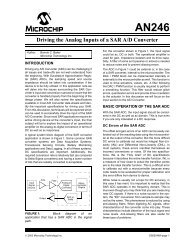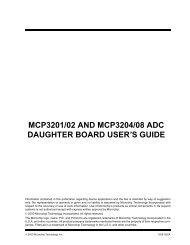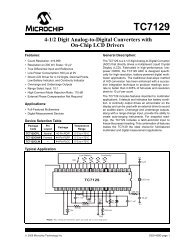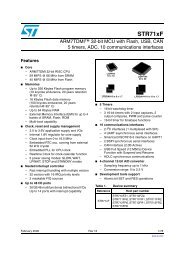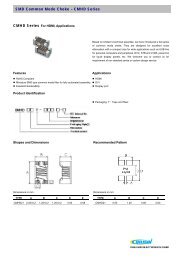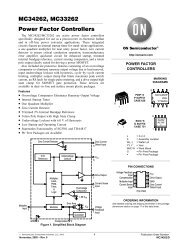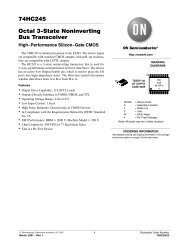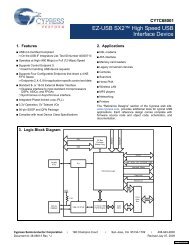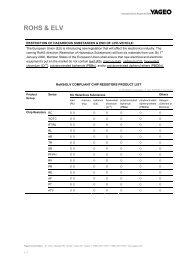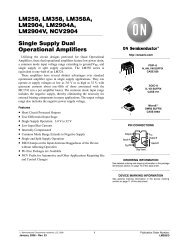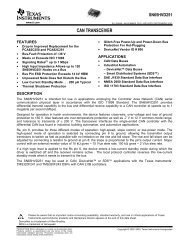Ultralow power ARM-based 32-bit MCU with 384 Kbytes Flash ... - Keil
Ultralow power ARM-based 32-bit MCU with 384 Kbytes Flash ... - Keil
Ultralow power ARM-based 32-bit MCU with 384 Kbytes Flash ... - Keil
- No tags were found...
Create successful ePaper yourself
Turn your PDF publications into a flip-book with our unique Google optimized e-Paper software.
STM<strong>32</strong>L162VD, STM<strong>32</strong>L162ZD, STM<strong>32</strong>L162QD, STM<strong>32</strong>L162RDFunctional overview3.4 Clock managementThe clock controller distributes the clocks coming from different oscillators to the core andthe peripherals. It also manages clock gating for low <strong>power</strong> modes and ensures clockrobustness. It features:● Clock prescaler: to get the best trade-off between speed and current consumption,the clock frequency to the CPU and peripherals can be adjusted by a programmableprescaler● Safe clock switching: clock sources can be changed safely on the fly in run modethrough a configuration register.● Clock management: to reduce <strong>power</strong> consumption, the clock controller can stop theclock to the core, individual peripherals or memory.● System clock source: three different clock sources can be used to drive the masterclock SYSCLK:– 1-24 MHz high-speed external crystal (HSE), that can supply a PLL– 16 MHz high-speed internal RC oscillator (HSI), trimmable by software, that cansupply a PLL– Multispeed internal RC oscillator (MSI), trimmable by software, able to generate 7frequencies (65 kHz, 131 kHz, 262 kHz, 524 kHz, 1.05 MHz, 2.1 MHz, 4.2 MHz).When a <strong>32</strong>.768 kHz clock source is available in the system (LSE), the MSIfrequency can be trimmed by software down to a ±0.5% accuracy.● Auxiliary clock source: two ultralow <strong>power</strong> clock sources that can be used to drive theLCD controller and the real-time clock:– <strong>32</strong>.768 kHz low-speed external crystal (LSE)– 37 kHz low-speed internal RC (LSI), also used to drive the independent watchdog.The LSI clock can be measured using the high-speed internal RC oscillator forgreater precision.● RTC and LCD clock sources: the LSI, LSE or HSE sources can be chosen to clockthe RTC and the LCD, whatever the system clock.● USB clock source: the embedded PLL has a dedicated 48 MHz clock output to supplythe USB interface.● Startup clock: after reset, the microcontroller restarts by default <strong>with</strong> an internal 2 MHzclock (MSI). The prescaler ratio and clock source can be changed by the applicationprogram as soon as the code execution starts.● Clock security system (CSS): this feature can be enabled by software. If a HSE clockfailure occurs, the master clock is automatically switched to HSI and a softwareinterrupt is generated if enabled.● Clock-out capability (MCO: microcontroller clock output): it outputs one of theinternal clocks for external use by the application.Several prescalers allow the configuration of the AHB frequency, each APB (APB1 andAPB2) domains. The maximum frequency of the AHB and the APB domains is <strong>32</strong> MHz. SeeFigure 2 for details on the clock tree.Doc ID 022268 Rev 2 17/124




